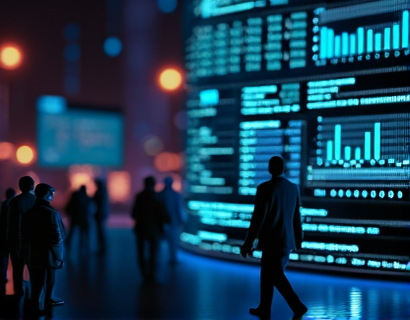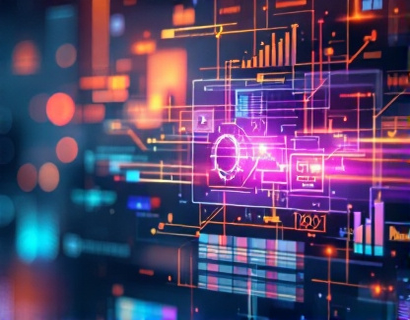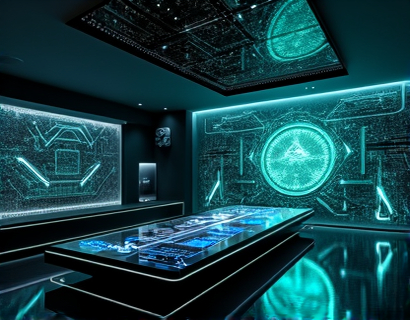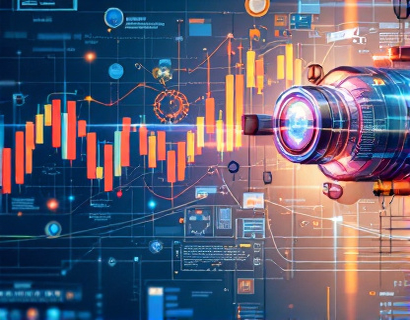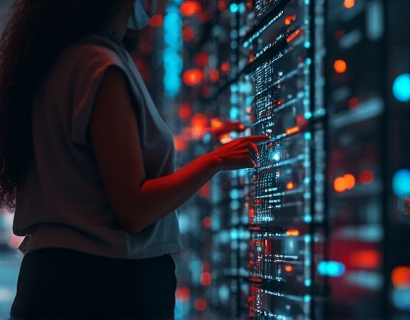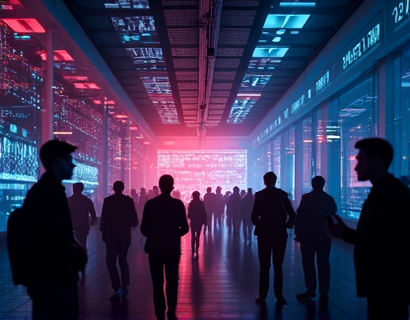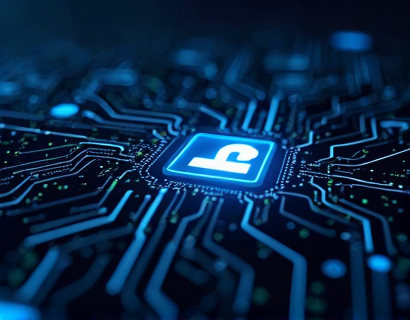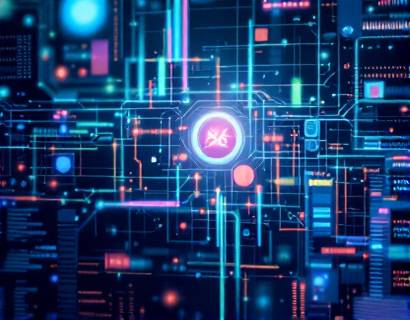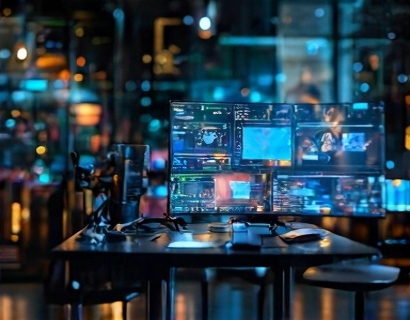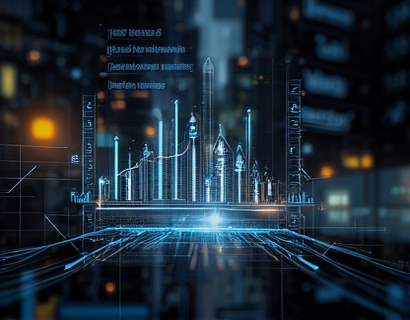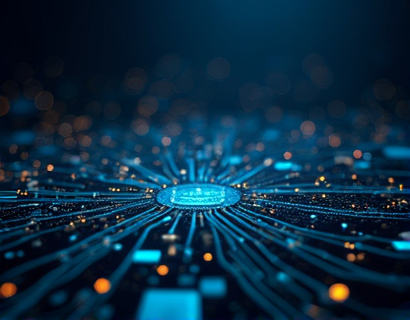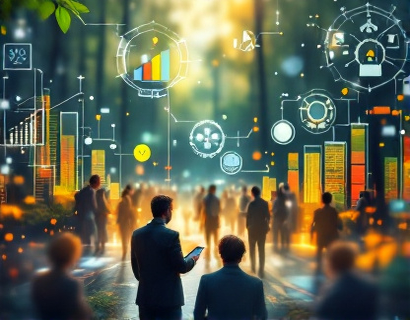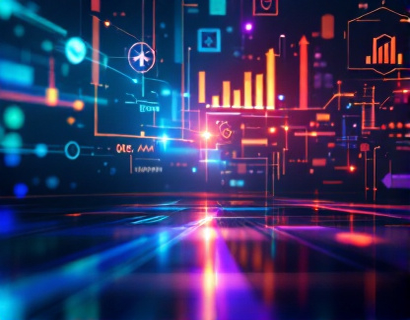Crypto and AI Power: Transforming User Experiences with Next-Gen Ucosystem Innovations
The intersection of blockchain technology and artificial intelligence (AI) is giving rise to a new era of digital engagement, one that promises enhanced security, unparalleled personalization, and seamless interaction. This transformative integration is not just a buzzword but a tangible shift in how we experience and interact with digital services. For tech enthusiasts and professionals, understanding this synergy is crucial as it opens up new avenues for innovation and growth. This article delves into the ways in which blockchain and AI are collaborating to redefine user experiences, offering valuable insights for those keen on the latest advancements in the tech landscape.
The foundation of this transformation lies in the unique properties of blockchain technology. Known for its decentralized and immutable ledger, blockchain ensures transparency and security in transactions. When combined with AI, which excels in pattern recognition and predictive analytics, the potential for creating robust and secure digital ecosystems becomes immense. One of the primary benefits of this integration is the enhancement of security measures. Traditional systems often rely on centralized servers, making them vulnerable to hacking and data breaches. Blockchain's decentralized nature, coupled with AI's advanced encryption techniques, creates a nearly impenetrable barrier against cyber threats.
Enhanced security is just the beginning. The real magic happens when AI is leveraged to personalize user experiences. AI algorithms can analyze vast amounts of data to understand user preferences and behaviors, allowing for highly tailored interactions. In the context of blockchain, this means that users can enjoy services that are not only secure but also customized to their specific needs. For instance, in decentralized finance (DeFi), AI can optimize trading strategies and risk management, while blockchain ensures that all transactions are transparent and tamper-proof. This synergy not only boosts user trust but also increases the overall efficiency of financial operations.
Personalization extends beyond financial services. In the realm of content delivery, AI-driven algorithms can curate personalized news feeds, recommendations, and entertainment options. Blockchain ensures that content creators are fairly compensated through smart contracts, which automatically execute payments when predefined conditions are met. This not only streamlines the payment process but also reduces the need for intermediaries, thereby lowering costs and increasing transparency. Users benefit from a more direct and equitable system, where their engagement and contributions are valued and rewarded in real-time.
Interaction is another area where blockchain and AI are making significant strides. Traditional user interfaces are often static and limited in functionality. With the integration of AI, user interfaces can become dynamic and adaptive, responding to user inputs in real-time. For example, chatbots powered by AI can provide instant customer support, handling queries and resolving issues with human-like conversational skills. When these chatbots operate on a blockchain-based platform, they ensure that user data is secure and that interactions are verifiable and traceable. This level of interaction not only enhances user satisfaction but also builds a stronger connection between users and services.
The combination of blockchain and AI also opens up new possibilities in the field of identity verification and management. Digital identities stored on a blockchain can be secured and managed using AI-driven tools that verify and authenticate user identities with high accuracy. This is particularly important in an era where identity theft and fraud are rampant. Users can have control over their personal data, sharing it selectively and securely with service providers. Smart contracts can automate the verification process, ensuring that only authorized parties access sensitive information. This not only protects user privacy but also simplifies the onboarding process for new users.
In the domain of supply chain management, the integration of blockchain and AI can lead to unprecedented levels of transparency and efficiency. AI can optimize logistics and inventory management by predicting demand and automating reordering processes. Blockchain ensures that every step of the supply chain is recorded and verified, from production to delivery. This level of transparency helps in identifying bottlenecks, reducing fraud, and ensuring compliance with regulations. For consumers, this means products that are not only delivered faster and more reliably but also with a clear and trustworthy provenance.
The healthcare sector is another area where the fusion of blockchain and AI is making a significant impact. AI can analyze medical data to provide personalized treatment plans, while blockchain ensures that patient data is securely stored and shared among authorized healthcare providers. This not only improves the quality of care but also enhances patient privacy. Smart contracts can automate insurance claims and reimbursements, reducing administrative burdens and ensuring that patients receive timely compensation for their medical expenses. The integration of these technologies fosters a more efficient, secure, and patient-centric healthcare system.
In the world of gaming, blockchain and AI are revolutionizing the way players interact with virtual environments. AI-driven non-playable characters (NPCs) can offer more realistic and engaging gameplay, adapting to player actions and strategies. Blockchain ensures that in-game assets and achievements are securely owned and traded by players, creating a true digital economy within games. This not only enhances the gaming experience but also opens up new revenue streams for developers and players alike. The use of non-fungible tokens (NFTs) further extends this concept, allowing for unique and verifiable digital assets that can be bought, sold, and collected.
The educational sector is not left behind in this technological revolution. AI-powered learning platforms can provide personalized education, adapting to the learning pace and style of each student. Blockchain can secure and verify educational credentials, ensuring that they are tamper-proof and easily shareable. This not only simplifies the verification process for employers and institutions but also empowers students to take control of their educational journey. Smart contracts can automate the issuance and verification of certificates, reducing administrative costs and increasing efficiency.
As the adoption of blockchain and AI continues to grow, it is essential to address the challenges and considerations that come with this integration. One of the primary concerns is the scalability of blockchain networks. While blockchain offers robust security, it can be slow and resource-intensive, especially when handling a high volume of transactions. However, advancements in blockchain technology, such as layer 2 solutions and sharding, are addressing these issues, making blockchain more scalable and efficient. AI, on the other hand, requires large amounts of data and computational power, raising concerns about energy consumption and environmental impact. The development of more energy-efficient AI algorithms and the use of renewable energy sources are key steps in mitigating these concerns.
Another important aspect is the regulatory landscape. As blockchain and AI technologies evolve, governments and regulatory bodies are beginning to establish frameworks to govern their use. Compliance with these regulations is crucial for the sustainable growth of these technologies. Companies and developers must stay informed about the legal requirements and ensure that their applications adhere to best practices in data privacy, security, and ethical AI usage. This not only protects users but also builds trust in these innovative solutions.
Looking ahead, the future of blockchain and AI integration holds immense potential. As these technologies continue to mature, we can expect even more sophisticated applications across various industries. The convergence of blockchain, AI, and other emerging technologies like the Internet of Things (IoT) will create a more interconnected and intelligent world. Users will benefit from seamless, secure, and personalized experiences that enhance every aspect of their digital lives. For tech professionals, this presents a wealth of opportunities to innovate and lead the charge in shaping the next generation of digital ecosystems.
In conclusion, the integration of blockchain and AI is transforming user experiences in profound ways, offering enhanced security, personalization, and interaction. As this synergy continues to evolve, it is crucial for tech enthusiasts and professionals to stay informed and engaged. By embracing these advancements, we can unlock new possibilities and drive growth in the ever-evolving tech landscape.









